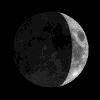Nietzsche: Fascist or Freedom Fighter? Part V; Heidegger’s Blunder and the Buddhist Doctrine of Change
This article will assess the issues Heidegger raises regarding Nietzsche’s philosophy. In so doing we will uncover the reason why Heidegger, member of the Nazi party, perverted the philosophy. Although later Nietzsche-influenced existentialists, such as Sartre and Jaspers would have differing views towards the Germans, and Nietzsche, part of the reason for the confusion in misinterpreting Nietzsche’s philosophy stems from Heidegger’s use of Nietzsche and Hitler.
Heidegger misinterprets Nietzsche’s philosophy on two main fronts and they are: 1) Heidegger’s understanding of the will to power as a concept, and 2) Heidegger’s failure to fully understand the refutation of Platonism. But these two are the same. Heidegger, follows an interpretation of Nietzsche based upon a statement of Nietzsche’s only explained in one rare notebook—“The Eternal Recurrence of the Same”. What Heidegger believes this to mean is a constantly reoccurring universe that is exactly the same every time the universe is born again. Based on this philosophy, the universe is an eternal stasis, total eternal nature of being. Its persuasive, but it’s also Platonic. This is of the greatest significance, Nietzsche’s philosophy, as Heidegger himself explains was an “inverted Platonism”.
Heidegger’s faith in an eternal recurrence of the same universe is probably not what Nietzsche intended, otherwise he would have published it that way. In any event, Nietzsche’s critique of Plato forbids this. Plato according to Heidegger, reversed the values of Being and Becoming, placing Becoming (the everyday world of constantly changing nature) below the valued concept of Being (that which is eternal). Heidegger believes this is the error with Plato, thus enabling him to believe that an eternal world was still in some way true. Heidegger, simply switches the placement in the distinction between Being and Becoming. It is this distinction is the point of Heidegger’s error. Before we elaborate on the consequences of this error, let us return to the concepts themselves, they can be confusing. Being and Becoming according to Nietzsche can be classified in this manner: The “real world” and the “apparent world.” The apparent world is what Plato has devalued. This devaluation to Nietzsche means that the world that we see has been relegated in importance below another world, a false world, that Nietzsche sarcastically calls the “real world”. Nietzsche’s goal is to edify his readers against the idea. Nietzsche states on page 20 of the Twilight of the Idols that: “the Real world—an idea with no further use, no longer an obligation—an idea become useless, superfluous—therefore a refuted idea: let us do away with it!” He goes on to state that we will get rid of the “apparent world” as well. This is where Heidegger messed up, he assumed that this inversion was a clear reversal of the apparent and real worlds in importance. But, no, they are both fallacious.
Being and Becoming to Nietzsche were understood differently because of his influence from Buddhism and the doctrine of change. Nietzsche believed that Being was our eternal nature eternally recurring but not the same way. On the contrary, because Becoming, the “apparent world”, is also obliterated by Nietzsche I believe that he meant that Becoming and Being were really two sides of the same coin. For example, if the world of Being and the world of Becoming are to be invalidated, then there can be no “world” of either at all. Since these realms do not actually exist, the concepts return to what they are—concepts. They are two aspects of everything we see and experience and they persist and shape our existence simultaneously. Plato’s separation of the two concepts is a metaphysical dualism in Philosophy. It is easy to see how Heidegger misinterpreted Nietzsche’s inversion of Plato. Heidegger did not consider this to mean a refutation, and an antithetical method as I do, but rather a metaphysical reversal, being and becoming still exist in the sense, that the eternal realm to Heidegger meant the eternal existence of our beings based on the concept that they will never die, forever, they will simply be born, live and die, forever and ever in the same way. This is Heidegger and the Nazi’s hell. The Nazi Swastika is tilted at a 45 degree angle and means reincarnation for the state, or in this case the same state over and over again. This is still then, a bit Platonic, in the sense that the apparent world and real worlds are then still tangible, the apparent world is this one, and the real one, the one before and the one after as they are the same, and thus eternal. I believe that what Nietzsche meant, was that Being the nature that is eternal, is the same as Becoming the nature of change. This can be better phrased as “the nature of change is eternal” and now the strong influence this Buddhist doctrine had on Nietzsche is clear. As this is the meaning behind all suffering, birth, life and death are suffering because they are constantly changing and occurring.


